The most widely planted ground cover in the world is—to no one’s surprise—the lawn. But there are very good reasons why you might want something other than grass to carpet the ground. Maybe you hate mowing and fertilizing. Perhaps you have a big shady area where grass won’t grow. Maybe you have a steep slope that’s difficult or dangerous to use a lawnmower. Or perhaps you wish you could put something colorful or more drought-tolerant in its place.
Here are 20 suitable candidates for you—sun or shade. In addition to being easy to grow and find, they also root as they spread to hold the soil and don’t need a lot of maintenance.
What is Ground Cover?
If you don’t exactly have a green thumb but what to add some color and interest to your landscaping, then consider ground cover. Ground covers are low-maintenance plants that spread quickly and usually grow from one to 12 inches in height—technically anything that covers the soil, including various types of grass. These plants have a horizontal spread, and new growth initiates from the base or roots.
Ground covers play an essential role in our ecosystem, providing diversity in many environments. In agriculture, ground coverings have the extra function of protecting your property from erosion and can even prevent weed growth.
Uses for Ground Cover
Decorative Purposes
Ground covers are a great way to connect parts of your landscaping to add cohesiveness to your home or garden. Adding a ground cover with seasonal blooms or an interesting texture can separate the area from typical grass. It can also be used between stepping stones to add a lush quality to your yard.
As a Low-Maintenance Solution
Instead of worrying about mowing the grass, ground covers can replace certain areas of your yard that may be difficult to access or don’t have enough natural light to grow grass properly.
To Enrich the Soil
Ground covers offer a protective layer over the topsoil, preventing it from drying out too much during warmer temperatures and retaining moisture throughout the winter. They also have the unique ability to prevent weed growth from underground. The horizontal spreading and deep roots can occupy enough space that weeds cannot sprout.
Ground Covers for Sun
Asian Star Jasmine
- Botanical Name: Trachelospermum asiaticum
- Sun Exposure: Full Sun, Partial Shade
- Soil Type: Average to Fertile, Well-drained
- Soil pH: Acidic, Neutral, Alkaline (5.0-7.0)
,Despite its name, which it gets from its creamy-yellow flowers in late spring and early summer, this is not a true jasmine. It is a supremely tough, fast-spreading, evergreen ground that tolerates heat, humidity, and well-drained soils. It grows about a foot high and can spread as much as 12 feet. It will climb if it encounters an obstacle, so keep an eye on that. You’ll also have to edge the planting occasionally to keep it in bounds. Plus, deer don’t like it.
Moss Pink (Creeping Phlox)
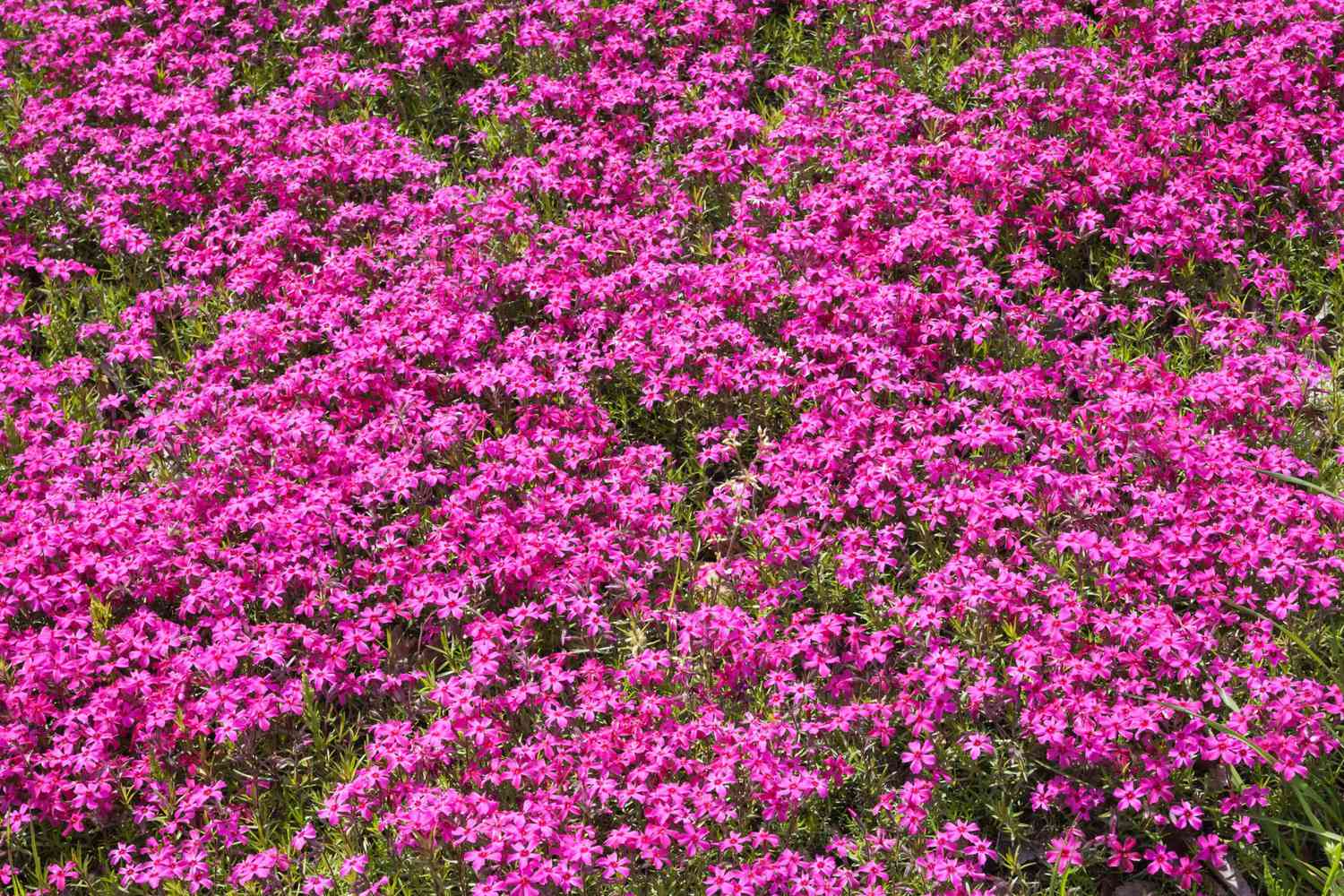
- Botanical Name: Phlox subulata
- Sun Exposure: Full Sun, Partial Shade
- Soil Type: Well-drained but Moist, Sandy, Rocky, Organic
- Soil pH: Neutral, Alkaline (6.0-8.0)
,Do you want color for spring? Here you go. Spectacular blue, red, pink, or white blooms smother moss pink’s needle-like foliage in spring. Plants form spreading, evergreen or semi-evergreen mats up to six inches high and three feet wide. They look great, edging flower beds, spilling over low retaining walls, or filling rock gardens. Cut them back by half after flowering. Good drainage is a must.
Blue Catmint
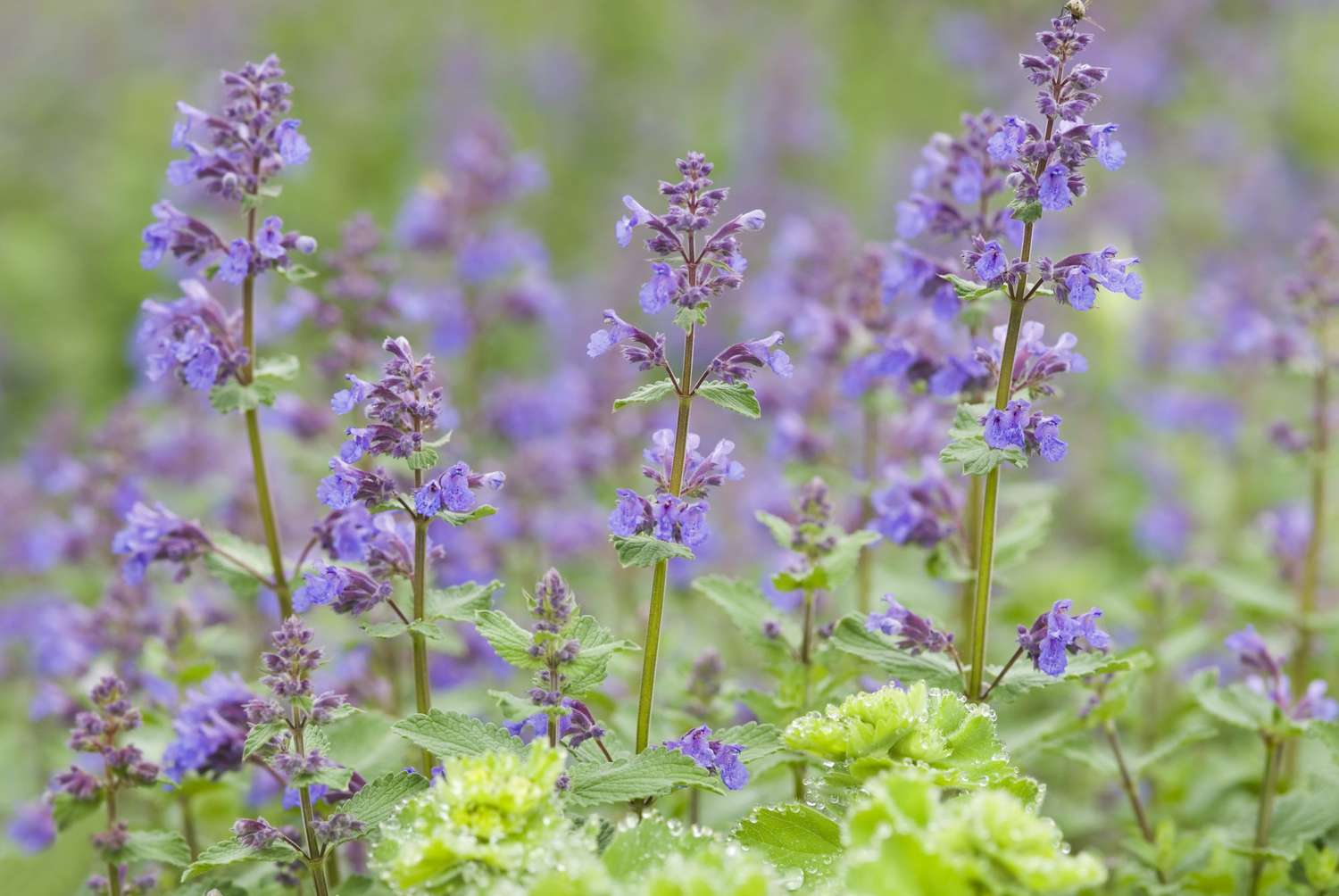
- Botanical Name: Nepeta x faassenii
- Sun Exposure: Full, Partial
- Soil Type: Well-drained, Clay, Loamy, Sandy, Rocky
- Soil pH: Acidic, Neutral, Alkaline (5.0-7.5)
,
This drought-tolerant, sun-seeking ground cover emits a lemon scent and bears large amounts of tiny flowers. Catmint grows in clumps but spreads, making it suitable for edging beds or spilling over walls. Shorter selections include «Junior Walker» and «Purrsian Blue,» growing to about 14 inches. Also, it is attractive to hummingbirds and butterflies so that you might enjoy some new visitors in your garden.
Creeping Juniper
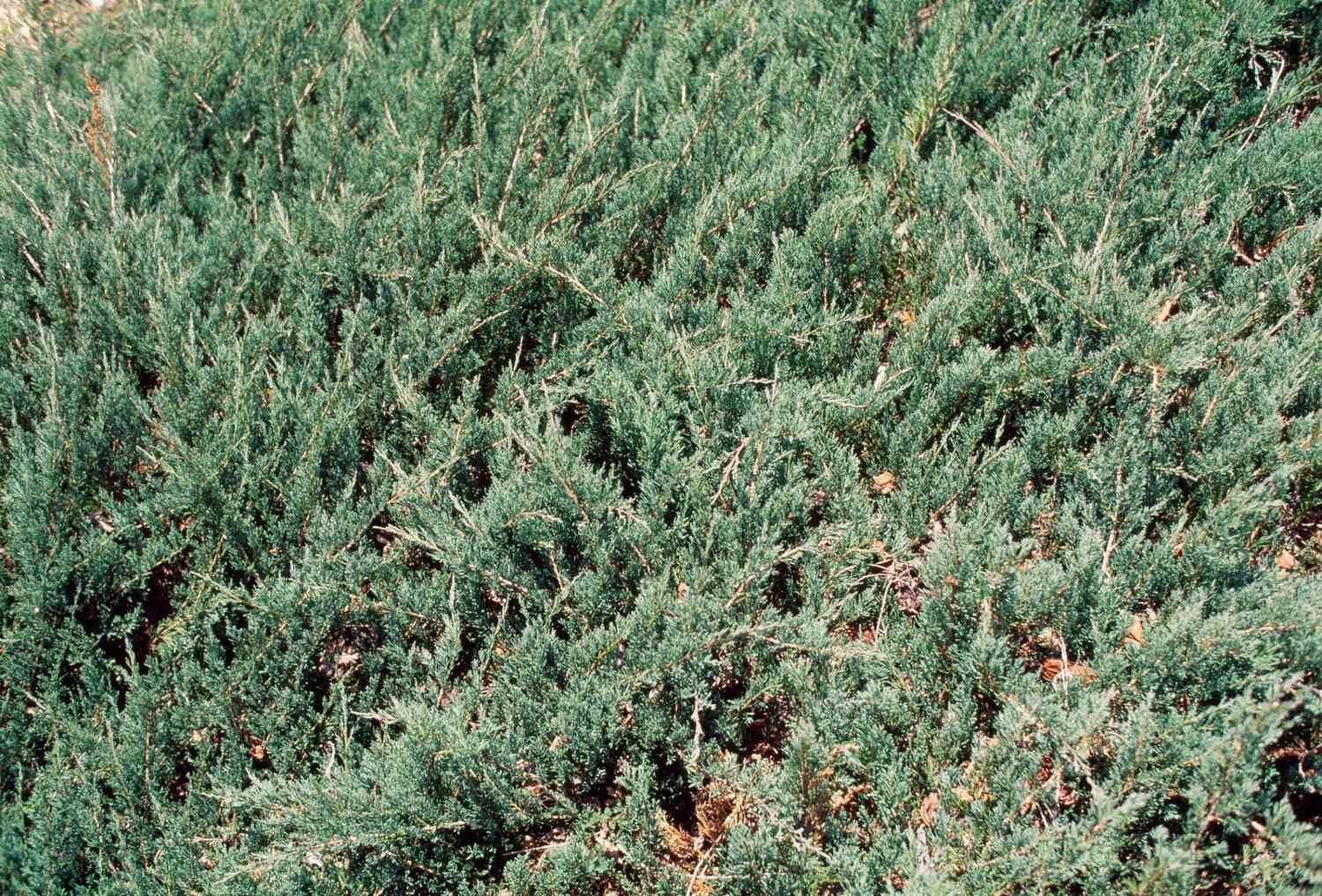
- Botanical Name: Juniperus horizontalis
- Sun Exposure: Full Sun
- Soil Type: Well-drained, Sandy, Rocky
- Soil pH: Acidic, Neutral (5.5-7.0)
,The creeping juniper spreads as a low-to-the-ground shrub up to 18 inches high, a relatively low-maintenance plant. It is available in dark green, yellow-green, or even blue-green foliage that thrives in moist soil but is also drought-tolerant. Creeping juniper is a favorite for planting on slopes. Plants can be pruned or trimmed when disease occurs to prevent it from spreading.
Creeping Thyme
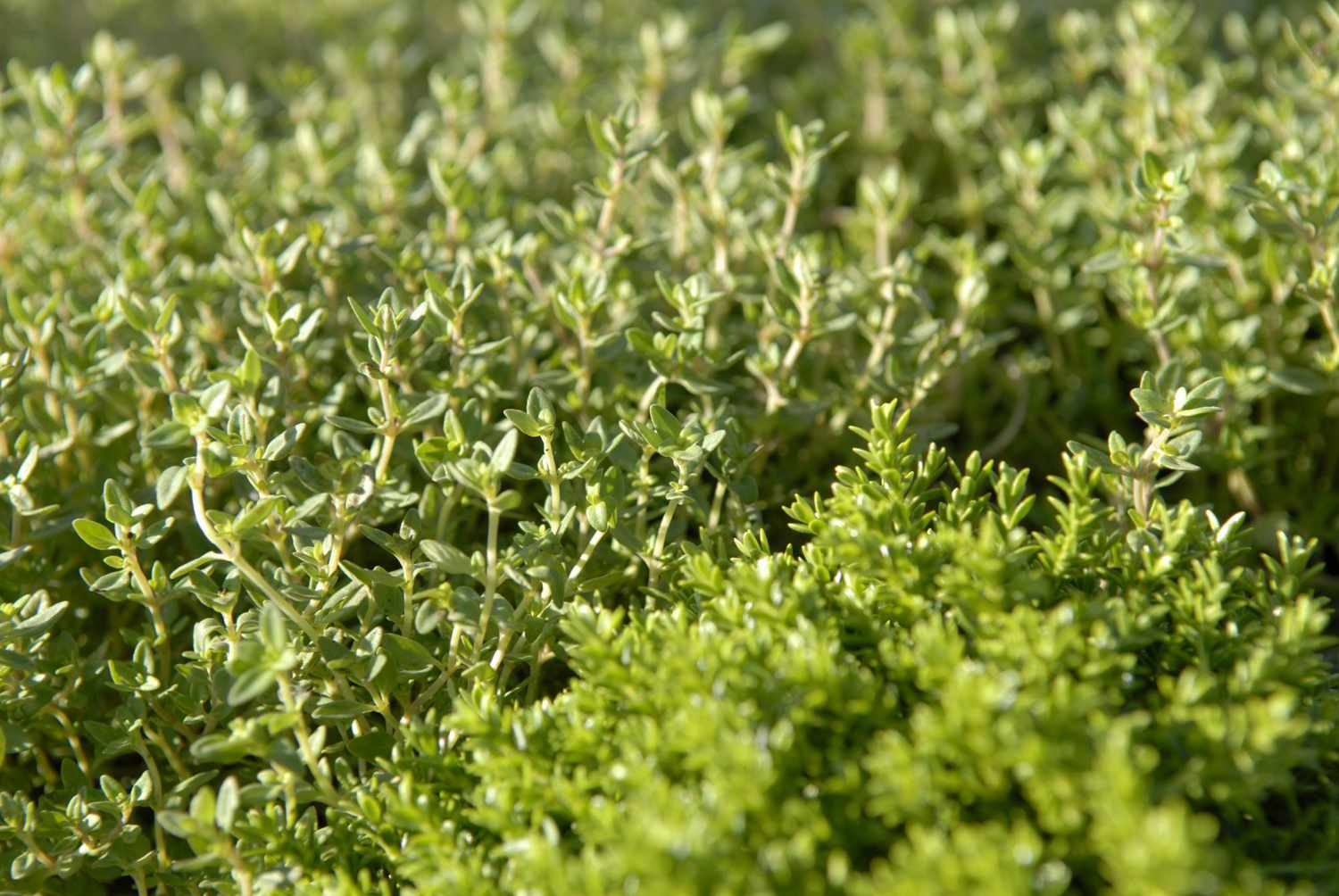
- Botanical Name: Thymus serpyllum
- Sun Exposure: Full Sun
- Soil Type: Well-drained, Sandy, Loamy, Rocky
- Soil pH: Acidic, Neutral (6.5-7.5)
,Creeping thyme has become a popular ground cover for filling dry, hot areas of the garden. This type of thyme is usually grown for its dainty pink, purple, or magenta flowers rather than for culinary purposes. Use the two-inch-tall plants to fill gaps between stepping stones, line borders, or sprawl over rock walls.
Plumbago

- Botanical Name: Ceratostigma plumbaginoides
- Sun Exposure: Full Sun, Partial Shade
- Soil Type: Well-drained, Dry, Slightly Moist
- Soil pH: Acidic, Neutral, Alkaline (6.1-7.5)
,Plumbago spreads enthusiastically, is rarely troubled by pests, produces true blue flowers in summer, and turns a coppery red in fall before disappearing for the winter. And it has weed control, sending out chemicals that inhibit their growth. Sounds perfect, except that plumbago can spread aggressively—cut it out with a spade if it oversteps its borders.
Siberian Cypress
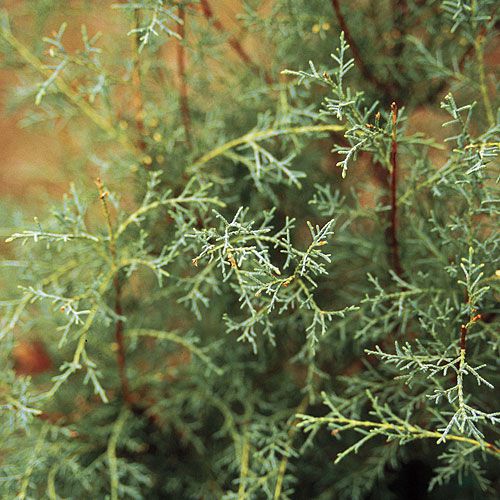
- Botanical Name: Microbiota decussata
- Sun Exposure: Full Sun
- Soil Type: Well-drained, Moist, Organic
- Soil pH: Acidic, Neutral, Alkaline (5.0-8.0)
,This feathery foliage is ideal as an evergreen, low-growing shrub. In autumn, the lush greenery turns a coppery bronze, making this the perfect year-round landscaping feature. Plus, this ground cover is cold-hardy.
Sweet Alyssum
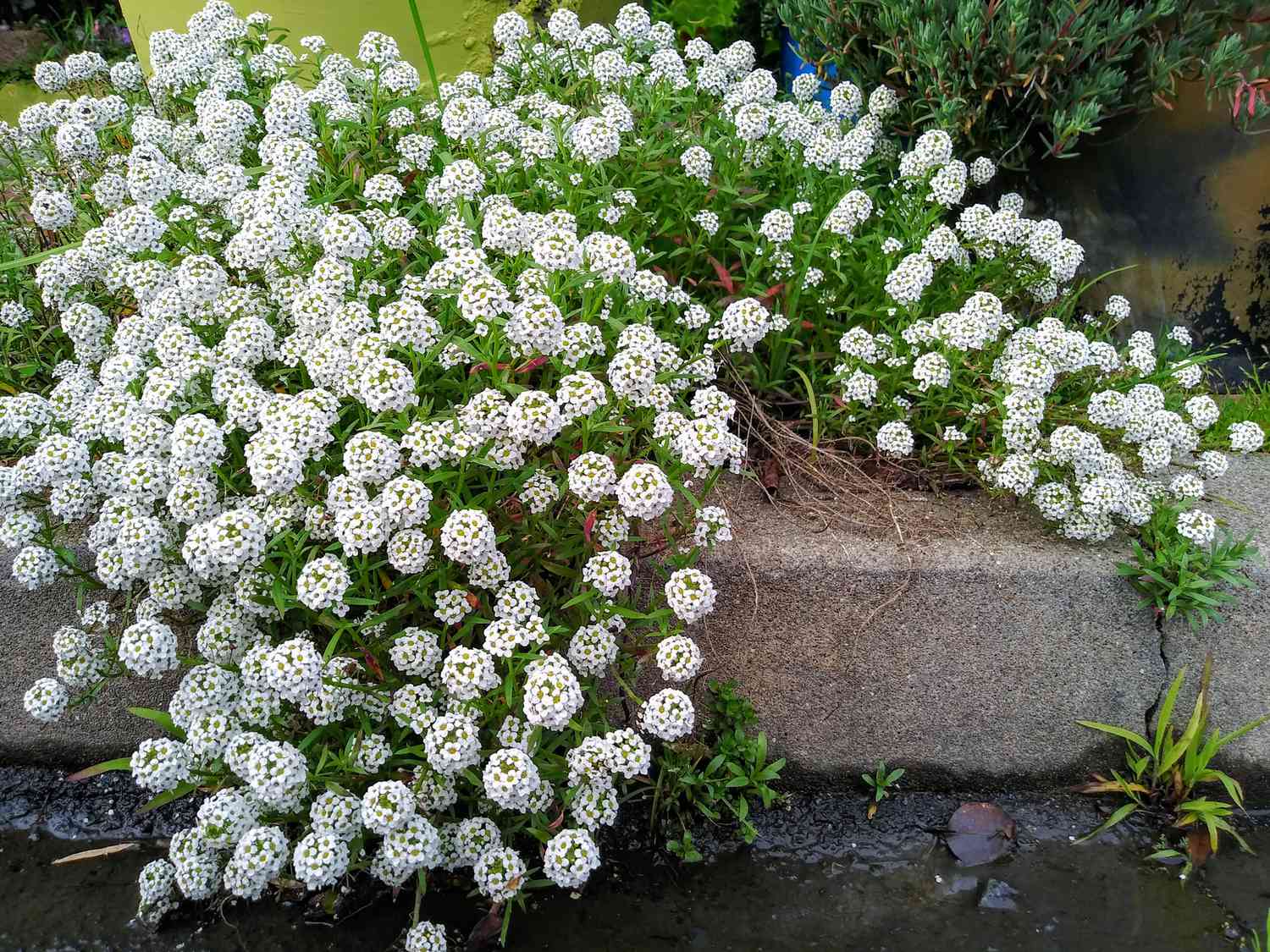
- Botanical Name: Lobularia maritima
- Sun Exposure: Full Sun, Partial Sun
- Soil Type: Well-drained, Moist
- Soil pH: Acidic, Neutral (6.0-7.0)
,This fast-growing ground cover bears four-petal flowers, typically in a crisp white, but varieties include deep purple, light pink, and peach. It is easy to grow this plant from seeds, and blooms should appear within a few months of being sown. Most varieties bloom in the fall, but others can bloom in summer or grow throughout autumn and winter as it is cool-season flowers. Considered an invasive plant in some regions, Sweet Alyssum will coat your landscape with beautiful, honey-smelling flowers.
Chamomile
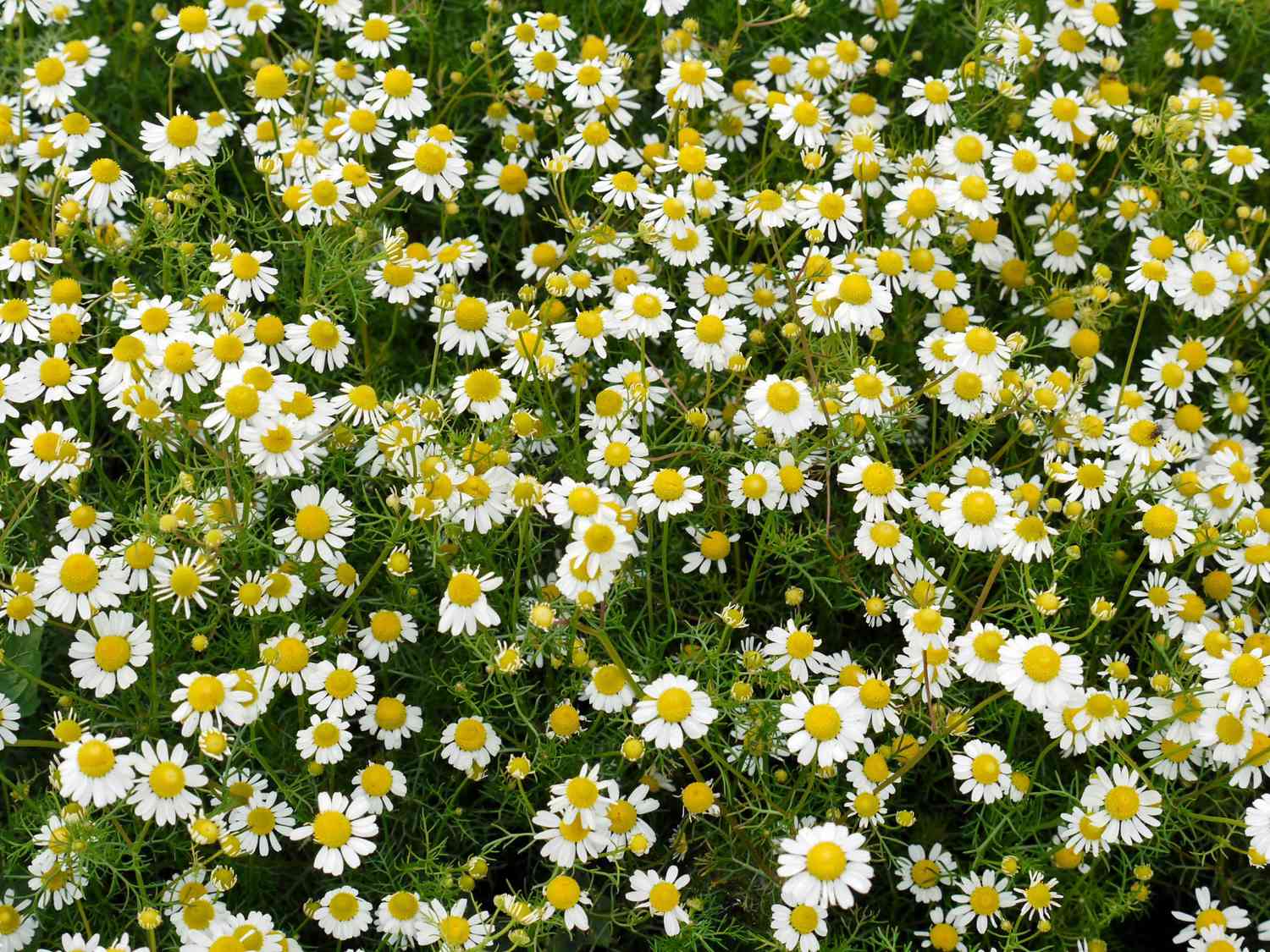
- Botanical Name: Matricaria chamomilla
- Sun Exposure: Full Sun, Partial Sun
- Soil Type: Well-drained, Rich
- Soil pH: Acidic, Neutral, Alkaline (5.6-7.5)
,As a member of the daisy family (Asteraceae), this delicate white petaled flower with bright yellow centers is a low-growing, perennial ground cover. Often used for medicinal purposes or in beauty products, Chamomile is a fragrant, sweet-smelling option to plant near walls or as a creeping plant. This easy-to-grow plant, which doesn’t require deadheading flowers or fertilizer, blooms in the spring and summer.
Lamb’s Ear

- Botanical Name: Stachys byzantina
- Sun Exposure: Full Sun, Partial
- Soil Type: Well-drained, Moist, Dry
- Soil pH: Slightly Acidic (6.0-6.5)
,Lamb’s Ear is a fast-growing and widespread ground cover. This perennial plant is known for having silvery foliage, appearing thick and softly textured. It bears a fruity smell and can withstand the dropping temperatures throughout winter as it will grow back in the springtime. The flowers can bloom from spring to fall in pink, purple, red, and white varieties.
Ground Covers for Shade
Mondo Grass

- Botanical Name: Ophiopogon japonicus
- Sun Exposure: Full Sun, Partial Shade
- Soil Type: Clay, Loamy, Sandy
- Soil pH: Slightly Acidic (5.5-6.5)
,For the look of lawn grass, but not the upkeep, mondo is your plant. Also called lilyturf, it forms blankets of deep green, grass-like foliage from six to eight inches tall that stay green year-round. Mondo grass spreads by underground rhizomes. Sapphire-blue berries appear among the leaves in fall. It tolerates salt, and deer don’t eat it. You need to mow it only once a year, in late winter, to remove any winter-damaged foliage.
Carpet Bugle (Bugleweed)

- Botanical Name: Ajuga reptans
- Sun Exposure: Full sun, partial shade, shade
- Soil Type: Well-drained, Moderately Moist, Clay, Loamy, Sandy
- Soil pH: Acidic (6.5)
,Is it a weed? I don’t think so, but it does form a fast-spreading carpet about six inches tall. They’re evergreen in most of the South, with leaves that can be green, purple, or variegated with pink and white. Spring sees lovely spikes of blue, lavender, or white flowers sitting atop the foliage. It’s easy to multiply the plants once starting to grow. Carpet bugleweed does best in fertile, well-drained soil with good air circulation—wet soil leads to rot.
Japanese Pachysandra
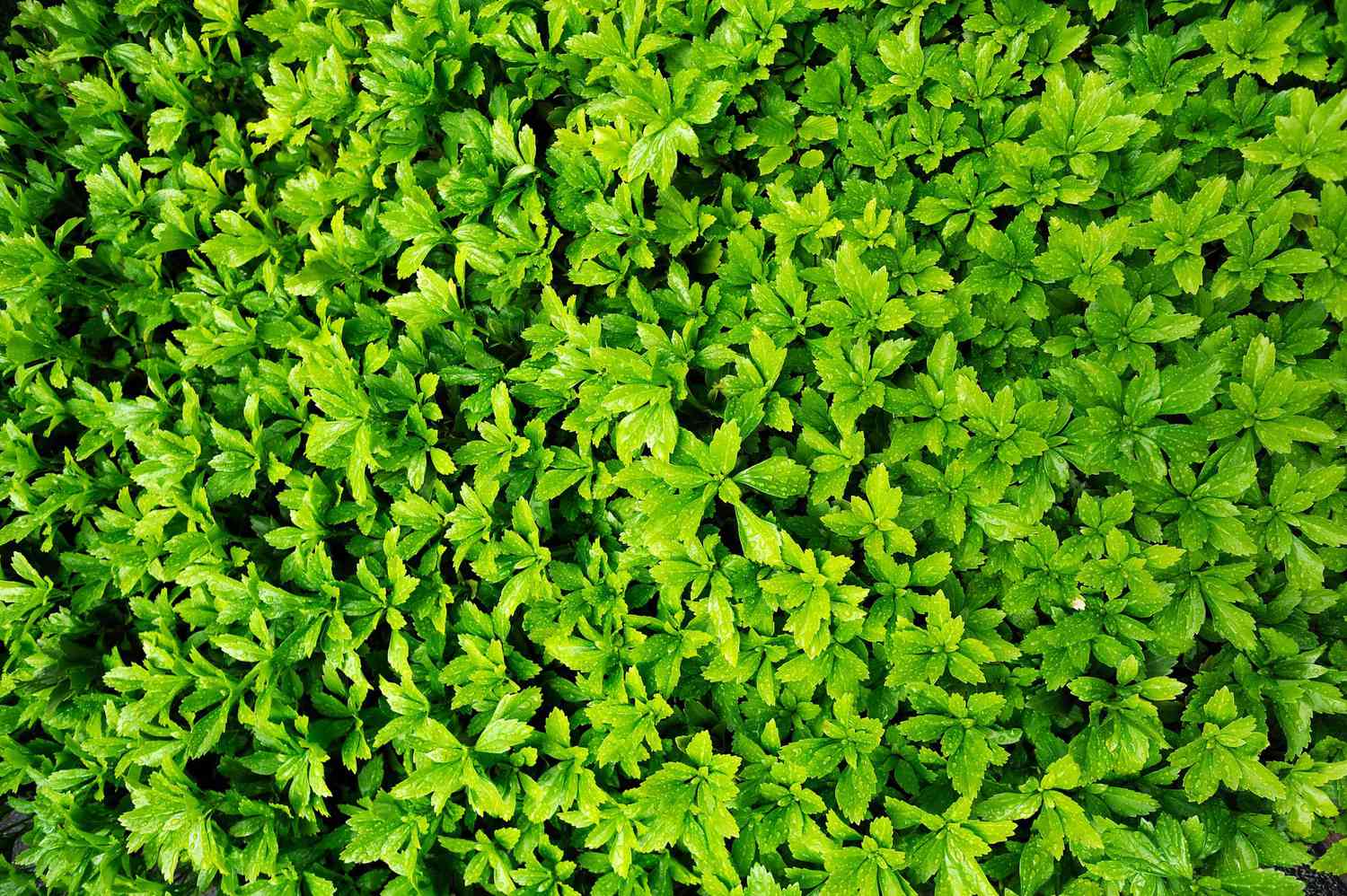
- Botanical Name: Pachysandra terminalis
- Sun Exposure: Partial Shade, Shade
- Soil Type: Moist, Rich, Clay, Loamy
- Soil pH: Slightly Acidic (4.5-5.5)
,Spreading by underground rhizomes, Japanese pachysandra forms colonies of handsome, glossy, deep-green foliage that stays green year-round. Leaves cluster at the ends of stems that stand six to 12 inches tall. Spikes of white flowers appear atop the foliage in summer. It’s an excellent choice for planting under trees. Like carpet bugleweed, Japanese pachysandra prefers fertile, well-drained soil. Avoid wetting the foliage with sprinklers, as this promotes disease.
Hosta
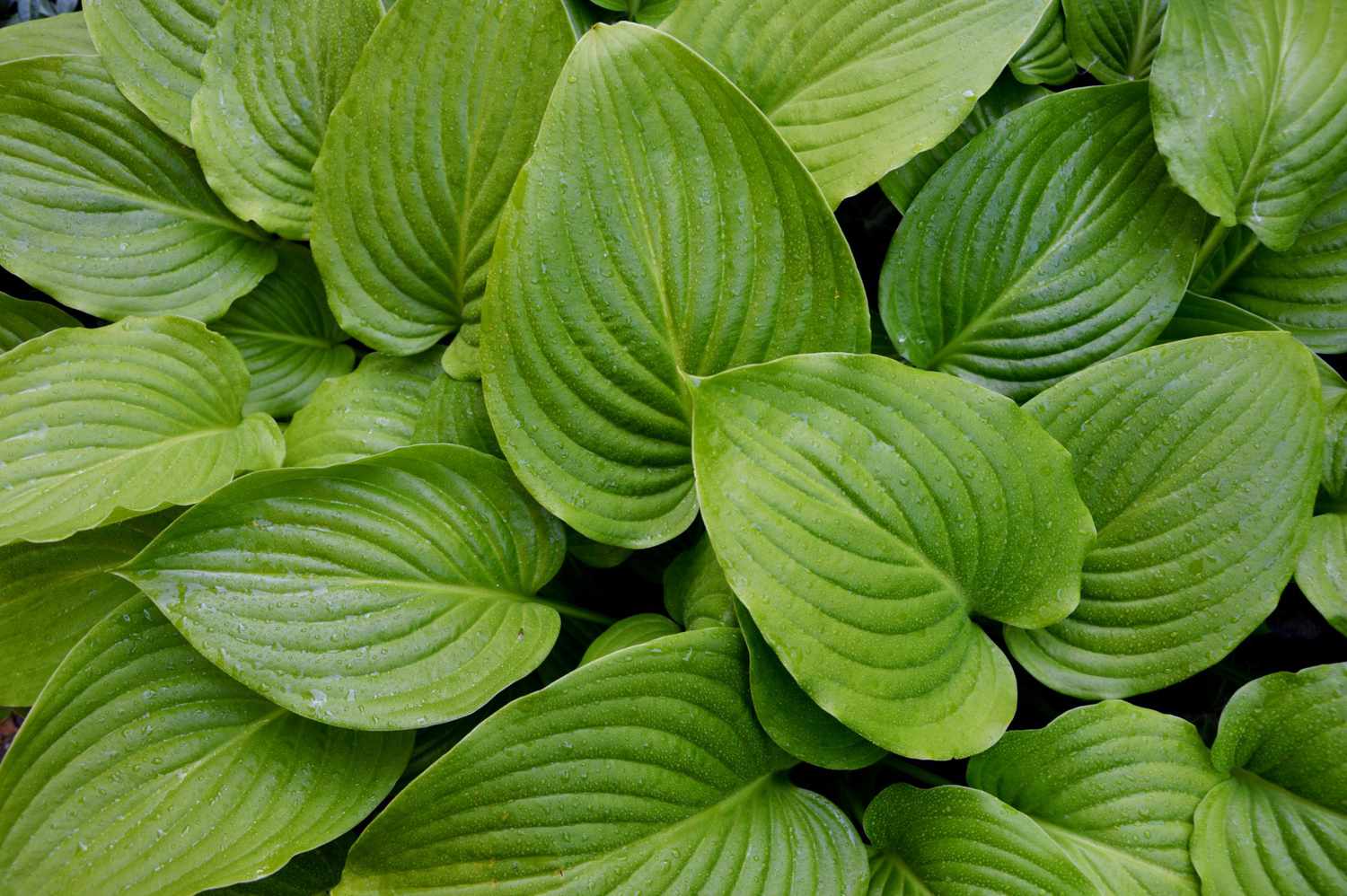
- Botanical Name: Hosta spp.
- Sun Exposure: Shade, Partial Shade
- Soil Type: Well-drained, Rich
- Soil pH: Slightly Acidic to Slightly Alkaline (6.5-7.5)
,
Also known as a plantain lily, hosta’s heart-shaped or oval leaves appear in blues, greens, and creamy variegated colors. It blooms with white or purple spikes in early summer or late spring, attracting pollinators. This plant is common among landscapers as it spreads slowly, offers a variety of foliage, and tolerates many soils. Some hostas grow pretty large, while others, like «Blue Mouse Ears,» stay under a foot tall. Deer do like to snack on the leaves.
Lady’s Mantle
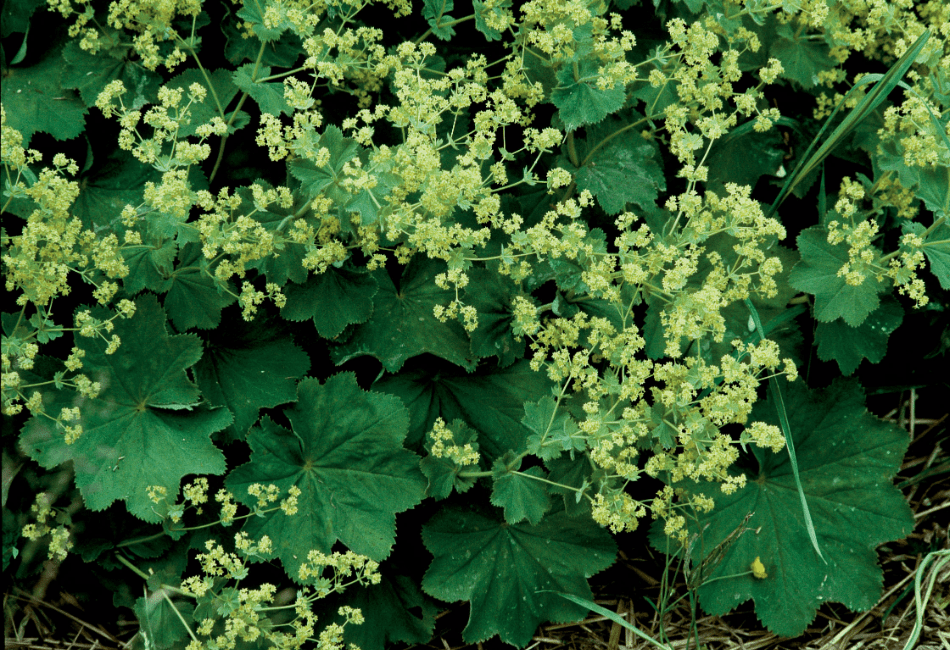
- Botanical Name: Alchemilla mollis
- Sun Exposure: Partial Shade, Shade
- Soil Type: Well-drained, but Moist
- Soil pH: Acidic, Neutral, Alkaline (5.5-7.5)
,This mounding perennial has large scallop-edged leaves and yellow-green flowers appearing in late spring or early summer. Lady’s mantle can thrive in partial sunlight but also succeeds primarily in the shade. It grows around six to 12 inches from the ground and should be planted in a moist area with space to grow. Trim dead flowers to remove seeds and keep the spread under control.
Lily of the Valley

- Botanical Name: Convallaria majalis
- Sun Exposure: Partial Shade, Shade
- Soil Type: Well-drained, Moist
- Soil pH: Acidic, Neutral (5.0-7.0)
,This woodland plant has white, bell-shaped flowers that trail from tall green foliage and emits a sweet scent. As a perennial ground cover, it spreads quickly, so pruning it near walkways or walls is necessary. Plant Lily-of-the-Valley in partial shade for best results, but some morning sun is also acceptable.
Sweet Woodruff

- Botanical Name: Galium odoratum
- Sun Exposure: Shade, Partial Shade
- Soil Type: Well-drained, Moist
- Soil pH: Acidic, Neutral, Alkaline (4.3-8.3)
,Sweet Woodruff is a creeping perennial that is considered invasive in some regions and great for ground cover in shady areas. It is also relatively easy to maintain and is resistant to animals such as deer and rabbits. This plant blooms in late spring and bears delicate, white flower clusters. It emits a vanilla aroma and attracts pollinators.
Maidenhair Fern
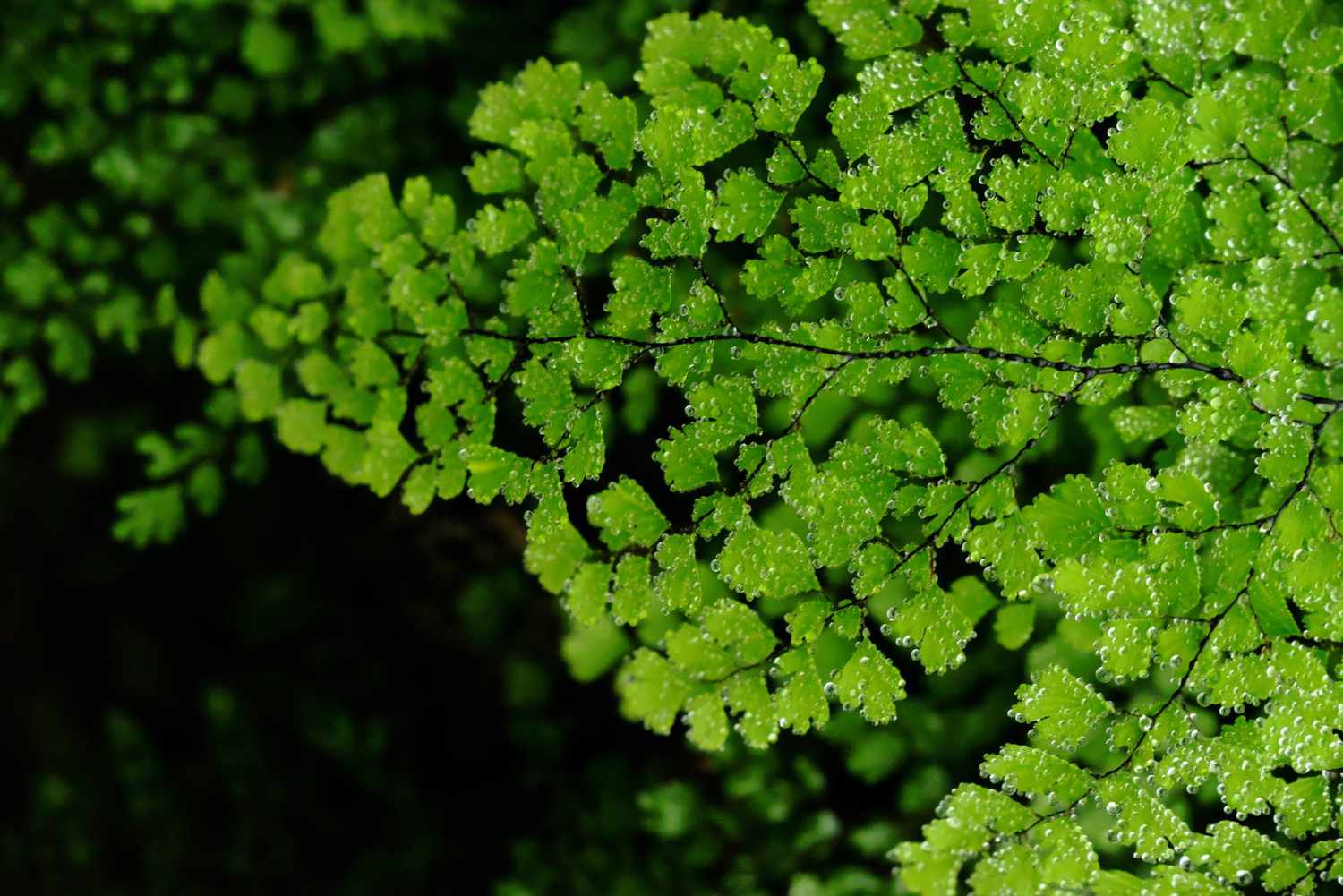
- Botanical Name: Adiantum pedatum
- Sun Exposure: Full Shade
- Soil Type: Well-drained, Moist, Clay, Loamy, Sandy
- Soil pH: Acidic, Neutral (6.8-7.2)
,Maidenhair ferns grow in places where typical plants are not found, including in-between rocks, making it great for a spreading ground cover. This perennial plant has feathery, fan-shaped, green foliage and is cold-hardy. This fern typically grows one to three feet and spreads around two feet but is considered slow-growing.
Vinca
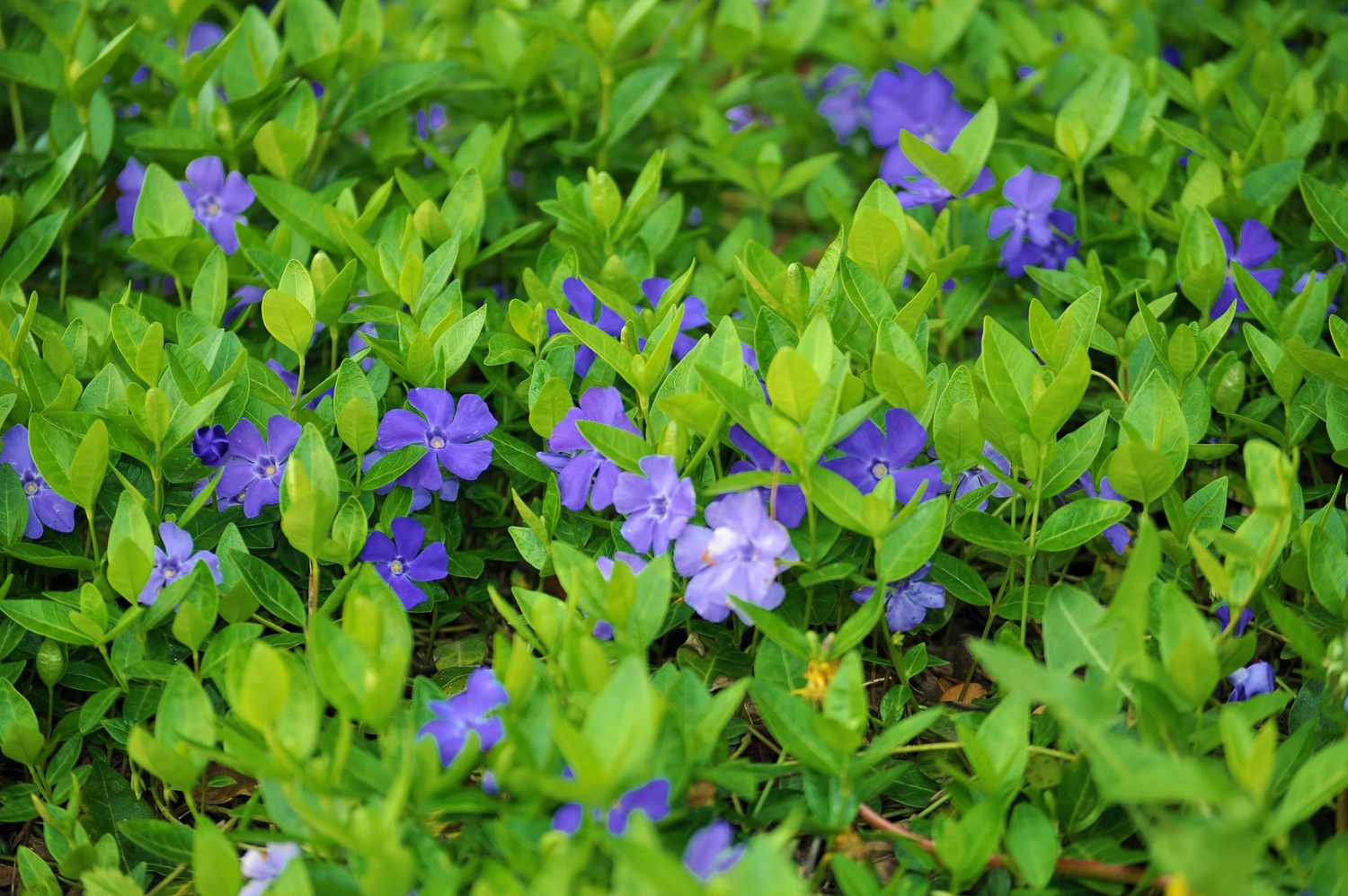
- Botanical Name: Vinca minor
- Sun Exposure: Full Shade, Partial Sun, or Shade
- Soil Type: Well-drained, Clay, Loamy, Sandy
- Soil pH: Acidic, Neutral (5.5-6.5)
,Vinca grows low to the ground, usually only up to six inches in height, but has a sprawling quality extending one to two feet. This shade-loving ground cover is tolerant of partial sun but will thrive in areas other plants won’t—like under-tree canopies—because it is drought-tolerant and adapts to most soil conditions. Since this plant is creeping, it is an excellent choice for hillsides because the spreading habit helps it remain intact.
Dead Nettle

- Botanical Name: Lamium maculatum
- Sun Exposure: Full Shade, Partial
- Soil Type: Well-drained, Loamy
- Soil pH: Acidic (6.0-7.0)
,Dead nettle, or Lamium, is considered an invasive species as it will quickly spread and fill an area in your landscape. The perennial ground cover is a member of the mint family (Lamiaceae) and grows around one foot tall. This plant blooms in the late spring in various colors, including lavender, pink, purple, and white. In addition to the floral blooms, the variegated and silvery foliage is often the main feature of this plant.